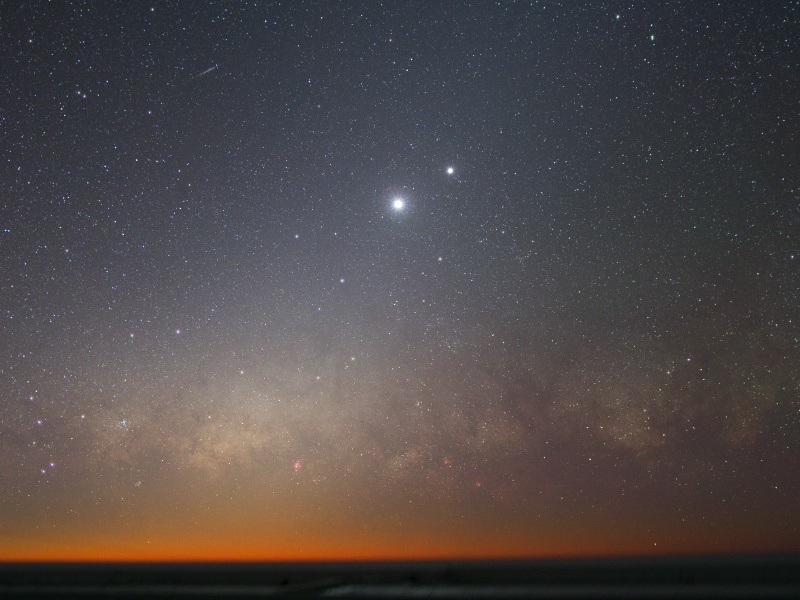
|
Credit & Copyright: Yuri Beletsky
(ESO)
Explanation:
Night skies over Chilean mountain top observatories
can be dark and clear, with
glorious cosmic vistas.
In this recent example, the plane of our Milky Way galaxy stretches
parallel to the horizon,
the galactic center's star clusters,
dark dust clouds, and glowing nebulae hovering in the west.
Recorded after sunset, the wedge of light extending upward
through the scene is Zodiacal light,
sunlight scattered by dust
along the solar system's ecliptic plane.
A faint meteor was also caught in the view, but
approaching a conjunction, brilliant Venus and
bright Jupiter dominate the skyscape.
A close pairing through this weekend, by Monday,
December 1,
they will be joined by the young
crescent Moon.
Look west after sunset and the tight celestial triangle formed by
Moon, Venus, and Jupiter, the three brightest beacons in the night,
will be
a
spectacular sight,
even from bright-sky urban locations all over the world.
|
January February March April May June July August September October November December |
| ||||||||||||||||||||||||||||||||||||||||||||||||
NASA Web Site Statements, Warnings, and Disclaimers
NASA Official: Jay Norris. Specific rights apply.
A service of: LHEA at NASA / GSFC
& Michigan Tech. U.
Based on Astronomy Picture
Of the Day
Publications with keywords: conjunction - Jupiter - zodiacal light
Publications with words: conjunction - Jupiter - zodiacal light
See also:
- APOD: 2025 August 15 Á Moonlight, Planets, and Perseids
- APOD: 2025 August 10 Á Zodiacal Road
- APOD: 2025 May 25 Á Beneath Jupiter
- Painting with Jupiter
- APOD: 2025 April 2 Á Jupiter and Ring in Infrared from Webb
- APOD: 2025 March 9 Á Cyclones at Jupiters North Pole
- APOD: 2025 February 16 Á Perijove 11: Passing Jupiter
